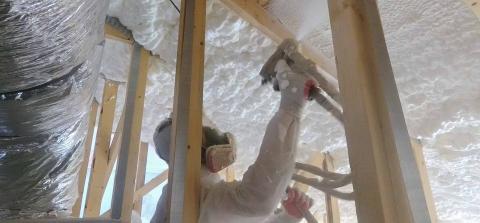Converting Vented Attic To Unvented

Should i use open cell or closed cell foam to insulate.
Converting vented attic to unvented. I ve been warned that closed cell foam can lead to sheathing rot from either roof leak or vapors from the house. I ve been researching several methods to insulate my attic. The loss of energy efficiency means some designers choose to move the ductwork into the conditioned areas of the home and leave the attics unvented. A secondary goal is to vent moisture that infiltrates the attic from the conditioned home.
I live in maryland and own a house that has the hvac system in the attic. If you convert your vented unconditioned attic to an unvented conditioned attic by installing open cell spray foam on the underside of your roof sheathing you may be surprised to discover that your attic is now the most humid room in your house. An unvented attic system relies on an air seal and no vents to make the attic a conditioned space. In colder climates the main purpose of a vented roof is to keep the roof cold and reduce the formation of ice dams.
Vented roofs serve a number of different purposes and their roles vary from climate to climate. I m considering converting my vented attic into a non vented conditioned space. By using an air impermeable insulation like spray foam on the roof deck will stop any air movement. I m unsure of what to do and i m unsure of the most.
From my research it looks like the best option is to make the attic a conditioned nonvented space. Asked by gary lichtenstein. Converting an attic from vented to unvented can reduce utility costs while improving comfort indoor air quality and durability. Currently the attic is vented and has zero insulation anywhere.
There s potential problems when converting from an open vented system to a sealed system as this homeowner found out.














































